Support

GETTING STARTED
EXAMPLES
STEPS TO GENERATE A STATEMENT OF OUTPUT
01
After the project's completion, members hold a 1-hour meeting to reflect on their experiences, using the SCs to frame the discussion of member-specific contributions.
- Using documented evidence, each member recaps his/her contributions to the project, thereby discouraging unsubstantiated claims. Each member then announces his/her assessment with reasons of his/her own and other members' contributions.
- In a 5-person example, A announces (CAA, CAB, ..., CAE), the contributions of members A, B, C, D and E that must sum to 1.0. If A announces a high own contribution (e.g., CAA = 0.8), his/her announcement of other members' total contribution is correspondingly low (i.e., CAB + ... + C -AE = 0.2).
- At a team's unlikely request, a teacher attends the meeting as a mediator, akin to the process used in an arbitration. Video recording discourages abusive and collusive behavior. It also generates a complete report of member interactions, useful for resolving a formal complaint and conducting research in teaching and learning.

02
Informed by the results from Step 1 and upon further discussions, each member revises his/her assessments. The members may input their revised assessments into an online spreadsheet to calculate individual scores based on an assumed overall project score (e.g., 80 on a 100-point scale). This informs each member of the revised assessments' impact on individual scores, thus facilitating the bargaining process.

03
Each member announces his/her final assessments, after seeing other members' revised announcements and the ensuing individual scores. This encourages settlement via peer pressure, desire for consensus, and if necessary, teacher mediation.

04
If the team fails to reach a settlement despite teacher mediation and video recording, the members final assessments are to be based on majority voting, which may invite collusion by some members. Hence, a member allegedly injured by the voting outcome can request a formal investigation that requires all members to submit affidavits with evidentiary details, a daunting task that preemptively deters collusive behavior.

01

After the project's completion, members hold a 1-hour meeting to reflect on their experiences, using the SCs to frame the discussion of member-specific contributions.
- Using documented evidence, each member recaps his/her contributions to the project, thereby discouraging unsubstantiated claims. Each member then announces his/her assessment with reasons of his/her own and other members' contributions.
- In a 5-person example, A announces (CAA, CAB, ..., CAE), the contributions of members A, B, C, D and E that must sum to 1.0. If A announces a high own contribution (e.g., CAA = 0.8), his/her announcement of other members' total contribution is correspondingly low (i.e., CAB + ... + C -AE = 0.2).
- At a team's unlikely request, a teacher attends the meeting as a mediator, akin to the process used in an arbitration. Video recording discourages abusive and collusive behavior. It also generates a complete report of member interactions, useful for resolving a formal complaint and conducting research in teaching and learning.
02
Informed by the results from Step 1 and upon further discussions, each member revises his/her assessments. The members may input their revised assessments into an online spreadsheet to calculate individual scores based on an assumed overall project score (e.g., 80 on a 100-point scale). This informs each member of the revised assessments' impact on individual scores, thus facilitating the bargaining process.

03
Each member announces his/her final assessments, after seeing other members' revised announcements and the ensuing individual scores. This encourages settlement via peer pressure, desire for consensus, and if necessary, teacher mediation.

04
If the team fails to reach a settlement despite teacher mediation and video recording, the members final assessments are to be based on majority voting, which may invite collusion by some members. Hence, a member allegedly injured by the voting outcome can request a formal investigation that requires all members to submit affidavits with evidentiary details, a daunting task that preemptively deters collusive behavior.

DOWNLOADS